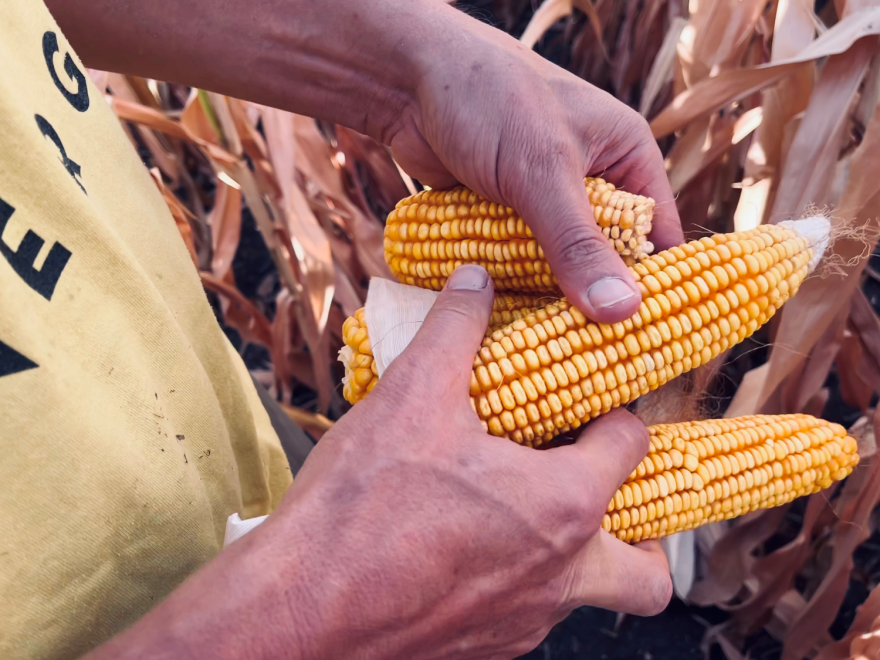Dolf Ivener walks through one of his western Iowa fields, where many of the corn leaves have already turned from green to a dried-out hue of brown.
“Generally, this corn would be between eight and nine feet tall. And I would say right now that's, maybe, seven feet tall? So, it's probably two-and-a-half feet shorter,” he said.
Ivener tracks precipitation through a phone app and sees big variations between more than a dozen crop locations spread over several counties. Some of his farms received 21 inches this season, while others received around just 14 inches.
“And when you go out and look at them, it is glaring,” he said. “You don't need the smart device to tell you they didn't get as much rain.”

The recent record-breaking heat, paired with little to no rain, has impacted the corn crop across the Midwest. The latest U.S. Department of Agriculture crop report rates national corn conditions 53% good to excellent, down 5 points in two weeks. Farmers in parts of Nebraska, Iowa, Illinois and Wisconsin are seeing the effects of hot temperatures; but Kansas and Missouri have the worst-rated corn with only a third reported as good to excellent.
Dennis Todey, director of the USDA’s Midwest Climate Hub, said the drought is having its biggest impacts on the heart of the Midwest, while things improve further east.
“Once you get over to Illinois, Indiana, and parts of Ohio and Michigan, they're starting to dry out more, but the conditions are not as bad. I think Indiana was actually going to be above average,” he said.
The hot, dry weather has sped up corn reaching maturity, with the USDA Crop report finding a national rate of 18%, double from the prior week. Todey said the crop is shutting down prematurely.
“It'll make for an earlier harvest season, so, there's one advantage that way. But there will be some yield loss and poor-quality yield because of this early maturity,” he said.
University of Nebraska Extension educator Eric Hunt said the latest wave of heat is likely to take a bite out of yields. While the USDA’s estimates in August put the national corn crop at around 175 bushels per acre, he expects that number to be lower.
“The weather has been more of an impact this year than it’s been realized,” Hunt said. “I believe we probably have underestimated the impact of the more recent heat in recent dryness.”

In parts of eastern and south-central Nebraska, he said there were fields that died by the middle of July. He said it’s the worst drought the state has seen since the 1950s.
“There's not a shortage of mental health issues in the farming community right now,” Hunt said. “They want to nurture their crop like they want to nurture their children and you don't want to see something you care about not do well.”
Looking ahead to next year, both experts say moisture is key for good results in the future.
“We really are going to need to get decent precipitation, this fall, early winter, before we have soils freeze, or we're going to be in the same boat. We're going to need to have a really wet spring to recharge soils as a reserve for next year's crop,” Hunt said.
As for this year’s crop, Ivener said he’s likely to see big swings in yields across his Iowa farms; from an estimated 200 bushels per acre in areas soaked by rains in July to yields potentially as low as 40 to 50 in other spots shriveled by drought.
The field he stands in today could end up somewhere in between.
“Until you run the combine through it, you won’t really know,” he said.
This story was produced in partnership with Harvest Public Media, a collaboration of public media newsrooms in the Midwest. It reports on food systems, agriculture and rural issues.
Copyright 2023 KCUR 89.3. To see more, visit KCUR 89.3. 9(MDA4OTAxNzAzMDEzMjc0MTc2MzA5ZDZlMw004))







